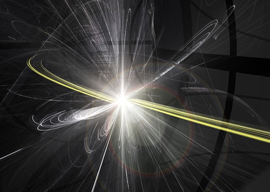
July 17, 2012

Anderson won the Nobel Prize for one of the most beautiful results in the last 80 years: Anderson localization, which describes a mechanism for localizing electrons in solids. While the intellectually insecure general public goes bananas over the Anderson-Higgs boson’s discovery, few have noticed the sublimeness of Anderson localization. The UC Berkeley Physics Department hasn’t even shown Anderson the courtesy of purchasing his latest book for their library.
High Energy Physics has problems unknown to the public. There are more High Energy theorists than ever before, but there are very few experiments that can be done to motivate or verify new theories. The Anderson-Higgs boson was postulated almost 50 years ago; it took that long for the experimental physicists to build a machine capable of finding it. Critics such as Anderson have pointed out that theory without close coupling to observation and experimentation no longer follows the scientific method. While modern High Energy theory is fascinating mathematics, there is no way of telling if it is physically true without experimental results.
Experimental High Energy Physics has a different illness. A vast apparatus is required to do experiments at the relevant high energies. Individual High Energy experimental physicists no longer conduct experiments”they’re generally cogs in an enormous engineering project. When the newsworthy results are eventually published, the paper will have thousands of names on it. A 2008 paper by one of the two groups who detected the Anderson-Higgs boson had over 2,900 “coauthors.” Many physicists enter the field in hopes of intellectual glory and scientific achievement, but how much of that is left after you share it with a few thousand people?
The tub-thumpers and popularizers are caterwauling about the Higgs discovery’s potentially wondrous technological benefits. There will likely be none, ever. There were none after the far more momentous discovery of the W and Z bosons in 1973. For historical contrast, James Clerk Maxwell wrote down the unification theory between electricity and magnetism in 1862. Forty years later, humanity was in the electrical age.
The difference is obvious: Electromagnetism is a low-energy phenomenon, and technologies could be developed from it using ordinary matter. The things the High Energy Johnnies worry about require heroic efforts to see at all. While their studies are interesting in the abstract, they are technologically barren.
I don’t begrudge the High Energy Physicists their pittance of government largesse for their projects. I do begrudge them their human capital. Clever people decry the human talent allocated to the financial-services industry, but a High Energy Physicist’s life seems grim compared to one dedicated to mammon. High Energy theorists are mostly decoupled from experiment. The experimental guys labor in obscurity on enormous projects. Why not return to physics’ heroic roots, where individuals and small teams could make important contributions? Why not a little more respect and maybe a documentary or two for “Low Energy Physics”?
Image courtesy of Shutterstock